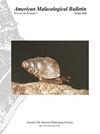使用拭子对肠杆菌上皮细胞取样进行分子遗传学分析
IF 0.4
4区 生物学
Q4 MARINE & FRESHWATER BIOLOGY
引用次数: 5
摘要
摘要:我们评估了使用拭子从章鱼表皮收集细胞作为经典遗传研究的非侵入性DNA来源的有效性,并通过将其纳入一天内确定捕获的活肠杆菌谱系(E.dofleini或神秘谱系)的工作中,证明了该技术的价值。该神秘谱系是圈养行为和形态学研究的目标,而一旦基因鉴定,非目标谱系可以更快地释放回野外。我们使用市售的无菌泡沫棉签和高盐保存缓冲液来收集和储存从阿拉斯加威廉王子湾采集的活肠杆菌中取样的成对棉签和肌肉(臂尖)组织。我们从上皮拭子样本中提取了一天的DNA,并扩增了两个诊断性微卫星基因座,以确定21个个体中每个个体的谱系。这种快速谱系评估使我们能够在实验室工作的一天内释放非目标个体,之后,我们比较了每个个体的成对拭子和肌肉组织样本,以评估DNA产量和基因分型结果的一致性,然后评估拭子DNA提取物的逐位点可靠性。相对于使用侵入性或破坏性技术收集的组织中获得的DNA(310.95±147.37(SD)ng/μL),上皮拭子平均产生的DNA量较低(170.32±74.72(SD)ng/ml)。当样品在室温下储存在裂解缓冲液中时,我们观察到在首次提取后19个月和31个月进行的拭子样品提取的DNA产量有所下降。所有提取物产生的DNA量足以扩增和评分所有基因座,其中包括来自10个微卫星基因座(9个多态性基因座和单态基因座EdoμA106)的片段数据,以及来自核辛烷脱氢酶基因528碱基对部分的核苷酸序列数据。使用配对拭子和肌肉组织提取物进行基因分型和测序的所有结果都是一致的,从拭子样本中产生的多位点基因型的实验可靠性水平超过97%。这项技术适用于侵入式采样不是最佳的研究,也适用于远程现场情况,因为样本可以在环境温度下储存至少31个月。因此,使用上皮拭子是一种非侵入性技术,适用于从活章鱼中取样遗传物质,用于经典遗传研究以及支持实验和行为研究。本文章由计算机程序翻译,如有差异,请以英文原文为准。
Use of Swabs for Sampling Epithelial Cells for Molecular Genetics Analyses in Enteroctopus
Abstract:
We evaluated the efficacy of using swabs to collect cells from the epidermis of octopus as a non-invasive DNA source for classical genetic studies, and demonstrated value of the technique by incorporating it into an effort to determine, within a day, the lineage of captured, live Enteroctopus (E. dofleini or a cryptic lineage). The cryptic lineage was targeted for captive behavioral and morphological studies, while once genetically identified, the non-target lineage could be more rapidly released back to the wild. We used commercially available sterile foamtipped swabs and a high-salt preservation buffer to collect and store paired swab and muscle (arm tip) tissue sampled from live Enteroctopus collected from Prince William Sound, Alaska. We performed a one-day extraction of DNA from epithelial swab samples and amplification of two diagnostic microsatellite loci to determine the lineage of each of the 21 individuals. Following this rapid lineage assessment, which allowed us to release non-target individuals within a day of laboratory work, we compared paired swab and muscle tissue samples from each individual to assess quantity of DNA yields and consistency of genotyping results, followed by assessment of locus-by-locus reliability of DNA extracts from swabs. Epithelial swabs yielded, on average, lower quantities of DNA (170.32 ± 74.72 (SD) ng/μL) relative to DNA obtained from tissues collected using invasive or destructive techniques (310.95 ± 147.37 (SD) ng/μL. We observed some decrease in yields of DNA from extractions of swab samples conducted 19 and 31 months after initial extractions when samples were stored at room temperature in lysis buffer. All extractions yielded quantities of DNA sufficient to amplify and score all loci, which included fragment data from 10 microsatellite loci (nine polymorphic loci and monomorphic locus EdoμA106), and nucleotide sequence data from a 528 base pair portion of the nuclear octopine dehydrogenase gene. All results from genotyping and sequencing using paired swab and muscle tissue extracts were concordant, and experimental reliability levels for multilocus genotypes generated from swab samples exceeded 97%. This technique is useful for studies in which invasive sampling is not optimal, and in remote field situations since samples can be stored at ambient temperatures for at least 31 months. The use of epithelial swabs is thus a noninvasive technique appropriate for sampling genetic material from live octopuses for use in classical genetic studies as well as supporting experimental and behavioral studies.
求助全文
通过发布文献求助,成功后即可免费获取论文全文。
去求助
来源期刊
CiteScore
1.00
自引率
40.00%
发文量
1
审稿时长
>12 weeks
期刊介绍:
The American Malacological Bulletin serves as an outlet for reporting notable contributions in malacological research. Manuscripts concerning any aspect of original, unpublished research,important short reports, and detailed reviews dealing with molluscs will be considered for publication. Recent issues have included AMS symposia, independent papers, research notes,and book reviews. All published research articles in this journal have undergone rigorous peer review, based on initial editor screening and anonymous reviewing by independent expertreferees. AMS symposium papers have undergone peer review by symposium organizer, symposium participants, and independent referees.

 求助内容:
求助内容: 应助结果提醒方式:
应助结果提醒方式:


